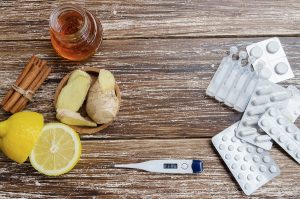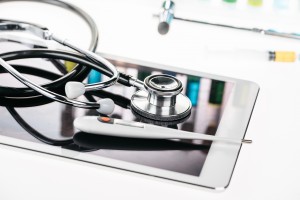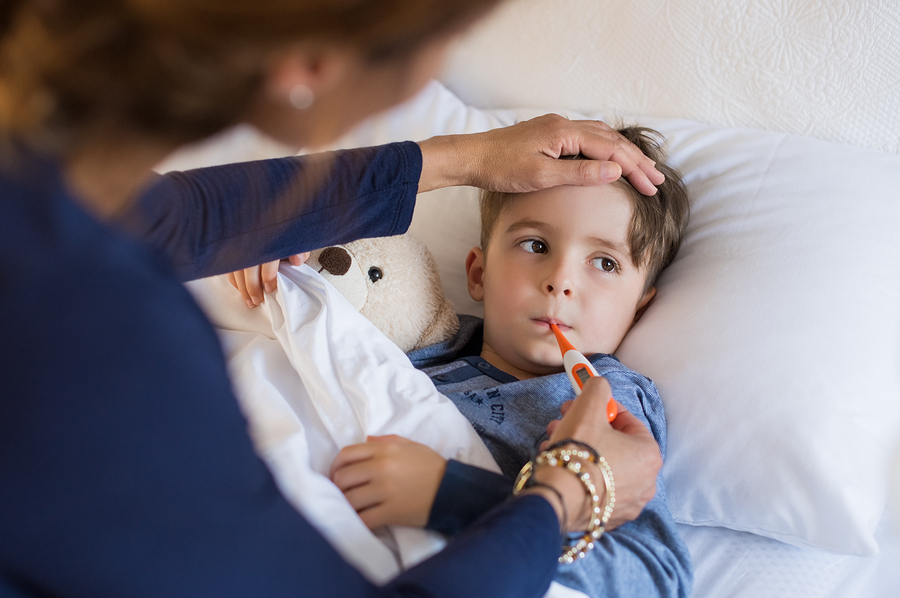Fever is very common in young children. More than 60% of parents with children aged between 6 months and 5 years say their child has had one. It’s usually caused by a minor viral infection, such as a cough or cold, and can normally be treated at home. A high temperature can be quite worrying for parents and carers, but most children recover with no problems after a few days. The problem, however, is that treatments for fever are often poorly provided, including poorly ventilated rooms and over-covered children, parents often do not know the recommendations that help to lower the temperature of their child. A recent study indicates what can be the right ways of improvement. | Forest Medical Calibration Services
Measuring Temperature
Parents often only moderately apply the recommendations of good practice to manage the fever of their child; shown by a new study conducted with parents interviewed by pharmacies and general practitioners or paediatricians.

Childhood fever sometimes leads to an irrational fear that tends to overburden doctors’ offices and paediatric accident & emergencies, while recommendations for good practice have been disseminated by international agencies to manage this symptom properly. These include: measuring the temperature; knowing the threshold defining the fever (38°C); the indication to start antipyretic treatment (38.5°C, dosage, etc.); and finally a series of physical measures that help to lower the temperature (proper oral hydration, undress the child, reduce the temperature of the room and/or ventilate).
To find out how parents behave in the face of their child’s fever and whether these attitudes are consistent with these recommendations, the researchers interviewed the parents of more than 6,500 children aged between one month and 12 years and who had had a fever for less than 48 hours.
Several avenues for improvement
The results showed that 89% of parents measure the temperature of the child, 61% know that 38°C is the threshold defined to indicate that the child has a fever, but only 23% correctly give antipyretic treatment and only 15% respect the physical measures that contribute to the child’s well-being.
In detail, the vast majority of parents start for example a drug treatment wrong for a temperature below 38.5°C. They also give less than three doses a day to the child while three to six doses are recommended for paracetamol and ibuprofen, respecting the time between each dose. Finally, the majority of parents do not ventilate the child’s room correctly.

These mixed results, however, hide improvement points in recent years including the gradual abandonment of the bath, the use of aspirin or the simultaneous intake of several drugs. In addition, the analysis of the profile of the parents interviewed shows that the level of knowledge increases with that of education. The authors, who have put forward possible avenues for improvement, consider that information campaigns adapted to parents of low or medium socioeconomic level would bear fruit.
Why is Calibration So Important?
Calibration defines the accuracy and quality of measurements recorded using a piece of equipment. Over time there is a tendency for results and accuracy to ‘drift’ particularly when using particular technologies or measuring particular parameters such as temperature and humidity. To be confident in the results being measured there is an ongoing need to service and maintain the calibration of equipment throughout its lifetime for reliable, accurate and repeatable measurements.
The goal of Medical Calibration Services is to minimise any measurement uncertainty by ensuring the accuracy of test equipment. Calibration quantifies and controls errors or uncertainties within measurement processes to an acceptable level.
Forest Medical use equipment that has been calibrated by a UKAS accredited laboratory specifically for Medical Equipment PAT Testing to ensure that this is the case.

-
-
- We are a registered medical calibration and testing company (ISO 9001:2008 awarded) that will issue a full certification pack to satisfy all CQC requirements.
- Our highly trained engineers can calibrate and test virtually any medical equipment to be found in a GP surgery, care home or occupational health department.
- All of our equipment is state of the art and checked to UKAS standards.
- Pricing options are available from a single item to an entire practice. We guarantee to beat any genuine quotation by at least 15%.
- No call out charge.
-
Simply fill in our Contact Form or telephone us, using the numbers below, and we will gladly answer any enquiries that you have for us.

